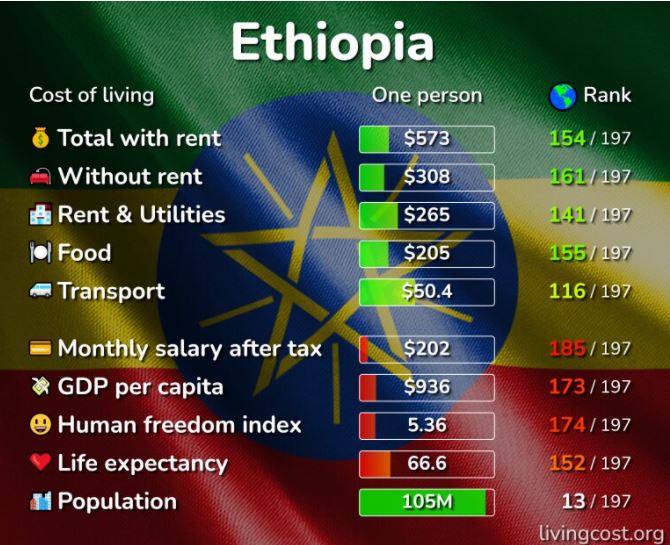
Unfortunately those who think Ethiopia under Abiy Ahmed has been transformed into the mythical state of “Wakanda” are suffering delusions of grandeur. For most Ethiopians health, education, and standards of living remain at the bottom of the barrel even for Africa. Abiy Ahmed and his supporters tout Ethiopian progress into a modern democratic state linked to emergence from Western democracy influence. The reality is that even the parts of Ethiopia not directly involved in war remain at or near the bottom of global human development scales even by comparison with other African states. While many Abiy Ahmed supporters are successful diaspora who have some education which allowed them to live middle class lives in Western democracies they care little about the countryside farmers who have seen only misery under Abiy Ahmed. Even while Tigrayans are suffering a catastrophic blockade of all life’s necessities the rest of Ethiopia has not fared well either.
While Abiy Ahmed has been placing pretty lights on the streets of Addis Ababa, building parks, and a few fancy museums in Addis Ababa which serves only the top 4% of the population meanwhile in the countryside where 88% live in poverty nothing positive has happened. Educational and health budgets have been slashed. Water projects abandoned. Prior to the onset of war in November 2020 one in four Ethiopians in the countryside required international aid for basic food stuffs. With millions displaced, locust outbreaks, and climate changes which have all been ignored by an Ethiopian government fixated on killing Tigrayans this need has increased.
While Ethiopia expects citizens to average 8.8 years of schooling the real number according to the latest United Nations Development Report is a paltry 2.9 years. This is basically the worst in the world. Abiy Ahmed and his supporters are part of an elite class which adds to the inequality rating of 43% for Ethiopia again one of the world’s worst. The overall disaster of life for most Ethiopians is expressed in the Multidimensional Poverty Index which combines health, education, and living standards which again finds Ethiopia near the bottom.

